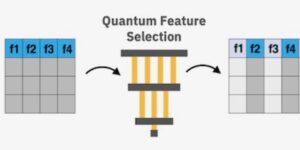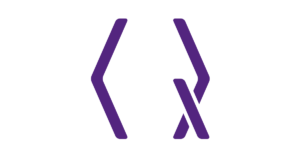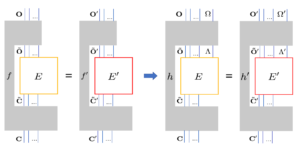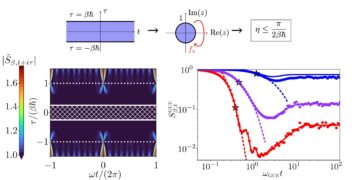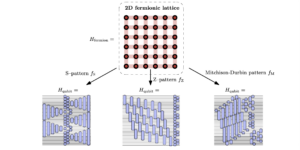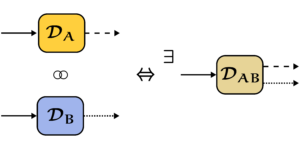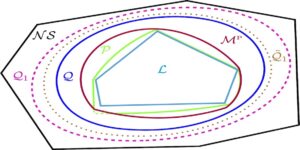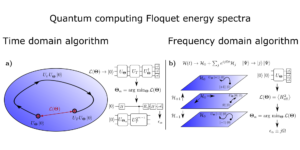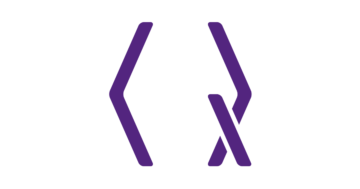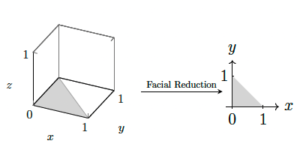Eindhoven University of Technology, P. O. Box 513, 5600 MB Eindhoven, The Netherlands
Eindhoven Hendrik Casimir Institute, P. O. Box 513, 5600 MB Eindhoven, The Netherlands
Find this paper interesting or want to discuss? Scite or leave a comment on SciRate.
Abstract
This work studies pulse based variational quantum algorithms (VQAs), which are designed to determine the ground state of a quantum mechanical system by combining classical and quantum hardware. In contrast to more standard gate based methods, pulse based methods aim to directly optimize the laser pulses interacting with the qubits, instead of using some parametrized gate based circuit. Using the mathematical formalism of optimal control, these laser pulses are optimized. This method has been used in quantum computing to optimize pulses for quantum gate implementations, but has only recently been proposed for full optimization in VQAs. Pulse based methods have several advantages over gate based methods such as faster state preparation, simpler implementation and more freedom in moving through the state space. Based on these ideas, we present the development of a novel adjoint based variational method. This method can be tailored towards and applied in neutral atom quantum computers. This method of pulse based variational quantum optimal control is able to approximate molecular ground states of simple molecules up to chemical accuracy and is able to compete with the gate based variational quantum eigensolver in terms of total number of quantum evaluations. The total evolution time $T$ and the form of the control Hamiltonian $H_c$ are important factors in the convergence behavior to the ground state energy, both having influence on the quantum speed limit and the controllability of the system.
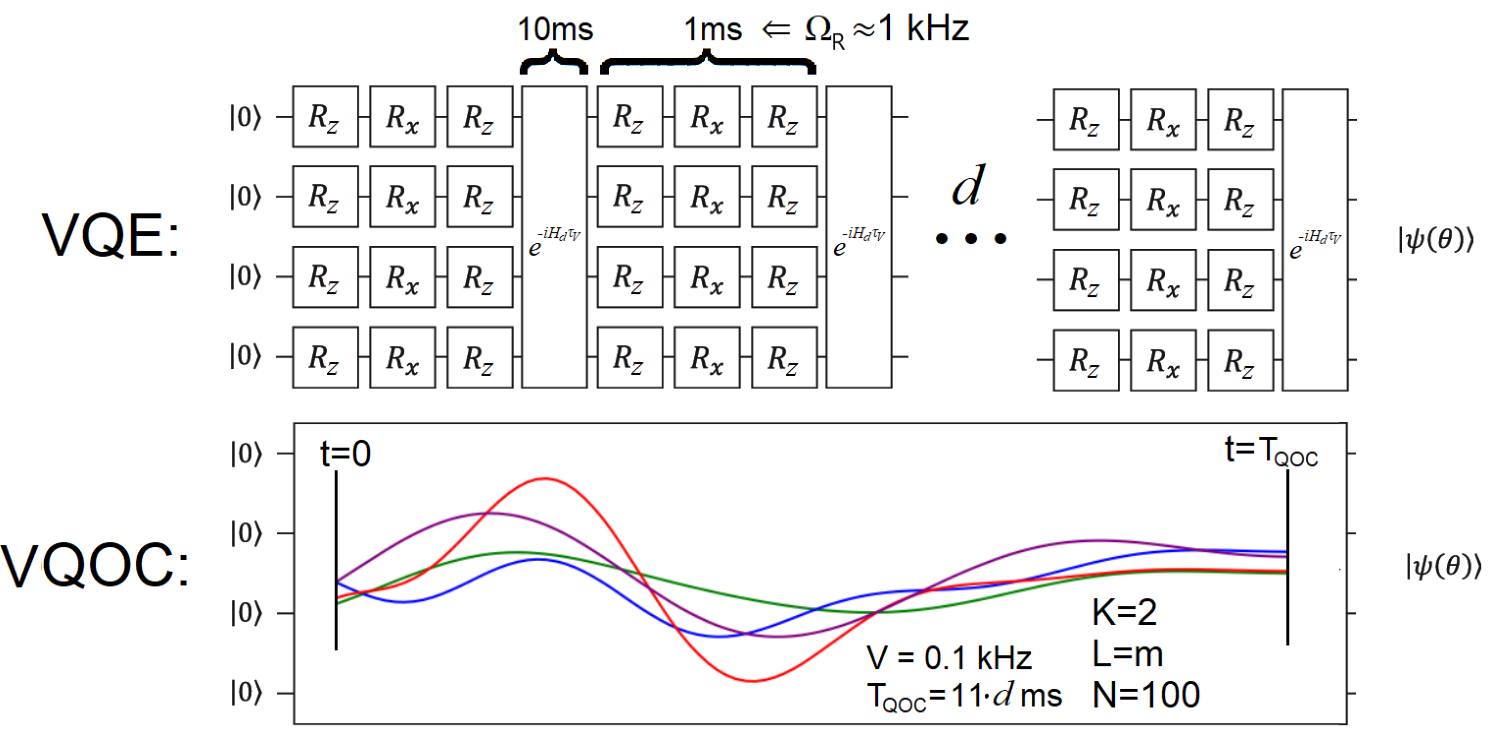
Featured image: Equivalent evolution processes used to compare gate based VQE and pulse based VQOC in the ground-state-energy problem. VQE is conducted on a hardware-efficient ansatz with $d$ layers of alternating ZXZ-gates and entanglement via the drift Hamiltonian. VQOC is executed with piecewise constant functions consisting of $N$ steps
Popular summary
Current VQAs often employ a parametrized quantum gate circuit to prepare the ground state of a system. These gates are executed by pulses interacting with the qubits, and thus the entire circuit could be seen as the concatenation of lots of small pulses, resulting in one large pulse. Optimizing over this pulse immediately instead of over the gate parameters results in a pulse based approach. Pulse based methods have several advantages over gate based methods such as faster state preparation, simpler implementation and more freedom in moving through the state space. Our pulse based VQOC method is able to converge to ground states of molecular problems for lower T than gate based algorithms can, mitigating decoherence effects.
► BibTeX data
► References
[1] A. B. Magann, C. Arenz, M. D. Grace, T.-S. Ho, R. L. Kosut, J. R. McClean, H. A. Rabitz, and M. Sarovar, PRX Quantum 2, 010101 (2021).
https://doi.org/10.1103/PRXQuantum.2.010101
[2] O. R. Meitei, B. T. Gard, G. S. Barron, D. P. Pappas, S. E. Economou, E. Barnes, and N. J. Mayhall, npj Quantum Information 7, 155 (2021).
https://doi.org/10.1038/s41534-021-00493-0
[3] A. Choquette, A. Di Paolo, P. K. Barkoutsos, D. Sénéchal, I. Tavernelli, and A. Blais, Phys. Rev. Research 3, 023092 (2021).
https://doi.org/10.1103/PhysRevResearch.3.023092
[4] J. Preskill, Quantum 2, 79 (2018).
https://doi.org/10.22331/q-2018-08-06-79
[5] F. Arute, K. Arya, R. Babbush, D. Bacon, J. C. Bardin, et al., Nature 574, 505 (2019).
https://doi.org/10.1038/s41586-019-1666-5
[6] A. Kandala, A. Mezzacapo, K. Temme, M. Takita, M. Brink, J. M. Chow, and J. M. Gambetta, Nature 549, 242 (2017), arXiv:1704.05018 [quant-ph].
https://doi.org/10.1038/nature23879
arXiv:1704.05018
[7] C. Hempel, C. Maier, J. Romero, J. McClean, T. Monz, H. Shen, P. Jurcevic, B. P. Lanyon, P. Love, R. Babbush, A. Aspuru-Guzik, R. Blatt, and C. F. Roos, Phys. Rev. X 8, 031022 (2018).
https://doi.org/10.1103/PhysRevX.8.031022
[8] A. Aspuru-Guzik and P. Walther, Nature Physics 8 (2012), 10.1038/nphys2253.
https://doi.org/10.1038/nphys2253
[9] T. E. O’Brien, P. Rożek, and A. R. Akhmerov, Phys. Rev. Lett. 120, 220504 (2018).
https://doi.org/10.1103/PhysRevLett.120.220504
[10] F. Arute, K. Arya, R. Babbush, D. Bacon, J. C. Bardin, R. Barends, et al., Science 369, 1084 (2020).
https://doi.org/10.1126/science.abb9811
[11] M. Cerezo, A. Arrasmith, R. Babbush, S. C. Benjamin, S. Endo, K. Fujii, J. R. McClean, K. Mitarai, X. Yuan, L. Cincio, and P. J. Coles, (2020), arXiv:2012.09265 [quant-ph].
https://doi.org/10.1038/s42254-021-00348-9
arXiv:2012.09265
[12] K. Bharti, A. Cervera-Lierta, T. H. Kyaw, T. Haug, S. Alperin-Lea, A. Anand, M. Degroote, H. Heimonen, J. S. Kottmann, T. Menke, W.-K. Mok, S. Sim, L.-C. Kwek, and A. Aspuru-Guzik, Rev. Mod. Phys. 94, 015004 (2022).
https://doi.org/10.1103/RevModPhys.94.015004
[13] T. Propson, B. E. Jackson, J. Koch, Z. Manchester, and D. I. Schuster, Phys. Rev. Applied 17, 014036 (2022).
https://doi.org/10.1103/PhysRevApplied.17.014036
[14] S. J. Glaser, U. Boscain, T. Calarco, C. P. Koch, W. Köckenberger, R. Kosloff, I. Kuprov, B. Luy, S. Schirmer, T. Schulte-Herbrüggen, D. Sugny, and F. K. Wilhelm, The European Physical Journal D 69, 279 (2015).
https://doi.org/10.1140/epjd/e2015-60464-1
[15] M. M. Müller, D. M. Reich, M. Murphy, H. Yuan, J. Vala, K. B. Whaley, T. Calarco, and C. P. Koch, Phys. Rev. A 84, 042315 (2011).
https://doi.org/10.1103/PhysRevA.84.042315
[16] N. Khaneja, T. Reiss, C. Kehlet, T. Schulte-Herbrüggen, and S. J. Glaser, Journal of Magnetic Resonance 172, 296 (2005).
https://doi.org/10.1016/j.jmr.2004.11.004
[17] P. Doria, T. Calarco, and S. Montangero, Phys. Rev. Lett. 106, 190501 (2011).
https://doi.org/10.1103/PhysRevLett.106.190501
[18] S. McArdle, S. Endo, A. Aspuru-Guzik, S. C. Benjamin, and X. Yuan, Rev. Mod. Phys. 92, 015003 (2020).
https://doi.org/10.1103/RevModPhys.92.015003
[19] This work considers the Hartree unit system in which $hbar =1$.
[20] D. J. Griffiths and D. F. Schroeter, Introduction to quantum mechanics (Cambridge University Press, 2020).
[21] S. Deffner and S. Campbell, Journal of Physics A: Mathematical and Theoretical 50, 453001 (2017).
https://doi.org/10.1088/1751-8121/aa86c6
[22] M. H. Goerz, T. Calarco, and C. P. Koch, Journal of Physics B: Atomic, Molecular and Optical Physics 44, 154011 (2011).
https://doi.org/10.1088/0953-4075/44/15/154011
[23] T. Caneva, M. Murphy, T. Calarco, R. Fazio, S. Montangero, V. Giovannetti, and G. E. Santoro, Phys. Rev. Lett. 103, 240501 (2009).
https://doi.org/10.1103/PhysRevLett.103.240501
[24] A. Peruzzo, J. McClean, P. Shadbolt, M.-H. Yung, X.-Q. Zhou, P. J. Love, A. Aspuru-Guzik, and J. L. O’Brien, Nature Communications 5, 4213 (2014), arXiv:1304.3061 [quant-ph].
https://doi.org/10.1038/ncomms5213
arXiv:1304.3061
[25] D. A. Fedorov, B. Peng, N. Govind, and Y. Alexeev, Materials Theory 6, 2 (2022).
https://doi.org/10.1186/s41313-021-00032-6
[26] C. Gogolin, G.-L. Anselmetti, D. Wierichs, and R. M. Parrish, New Journal of Physics (2021).
https://doi.org/10.1088/1367-2630/ac2cb3
[27] R. J. P. T. de Keijzer, V. E. Colussi, B. Škorić, and S. J. J. M. F. Kokkelmans, (2021), arXiv:2102.01781 [quant-ph].
https://doi.org/10.1116/5.0076435
arXiv:2102.01781
[28] W. M. Kirby and P. J. Love, Phys. Rev. Lett. 127, 110503 (2021).
https://doi.org/10.1103/PhysRevLett.127.110503
[29] A. J. C. Woitzik, P. K. Barkoutsos, F. Wudarski, A. Buchleitner, and I. Tavernelli, Phys. Rev. A 102, 042402 (2020).
https://doi.org/10.1103/PhysRevA.102.042402
[30] J. C. Spall, IEEE Transactions on Aerospace and Electronic Systems 34, 817 (1998).
https://doi.org/10.1109/7.705889
[31] O. Crawford, B. v. Straaten, D. Wang, T. Parks, E. Campbell, and S. Brierley, Quantum 5, 385 (2021).
https://doi.org/10.22331/q-2021-01-20-385
[32] Y. Cao, J. Romero, J. P. Olson, M. Degroote, P. D. Johnson, M. Kieferová, I. D. Kivlichan, T. Menke, B. Peropadre, N. P. D. Sawaya, S. Sim, L. Veis, and A. Aspuru-Guzik, Chemical Reviews 119, 10856 (2019).
https://doi.org/10.1021/acs.chemrev.8b00803
[33] A. Asthana, C. Liu, O. R. Meitei, S. E. Economou, E. Barnes, and N. J. Mayhall, (2022), 10.48550/ARXIV.2203.06818.
https://doi.org/10.48550/ARXIV.2203.06818
[34] S. Jandura and G. Pupillo, Quantum 6, 712 (2022).
https://doi.org/10.22331/q-2022-05-13-712
[35] Y. Atia, Y. Elias, T. Mor, and Y. Weinstein, International Journal of Quantum Information 12, 1450031 (2014), https://doi.org/10.1142/S0219749914500312.
https://doi.org/10.1142/S0219749914500312
arXiv:https://doi.org/10.1142/S0219749914500312
[36] Y. Baum, M. Amico, S. Howell, M. Hush, M. Liuzzi, P. Mundada, T. Merkh, A. R. Carvalho, and M. J. Biercuk, PRX Quantum 2, 040324 (2021).
https://doi.org/10.1103/PRXQuantum.2.040324
[37] L. Xiao and J. A. Jones, Phys. Rev. A 73, 032334 (2006).
https://doi.org/10.1103/PhysRevA.73.032334
[38] J. A. Jones, Phys. Rev. A 87, 052317 (2013).
https://doi.org/10.1103/PhysRevA.87.052317
[39] W. Zhu, J. Botina, and H. Rabitz, The Journal of Chemical Physics 108, 1953 (1998), https://doi.org/10.1063/1.475576.
https://doi.org/10.1063/1.475576
arXiv:https://doi.org/10.1063/1.475576
[40] M. Schuld, V. Bergholm, C. Gogolin, J. Izaac, and N. Killoran, Phys. Rev. A 99, 032331 (2019).
https://doi.org/10.1103/PhysRevA.99.032331
[41] S. Butenko and P. M. Pardalos, Numerical Methods and Optimization: An introduction (CRC Press, 2015).
[42] M. Morgado and S. Whitlock, AVS Quantum Science 3, 023501 (2021), https://doi.org/10.1116/5.0036562.
https://doi.org/10.1116/5.0036562
arXiv:https://doi.org/10.1116/5.0036562
[43] X.-F. Shi and Y. Lu, Phys. Rev. A 104, 012615 (2021).
https://doi.org/10.1103/PhysRevA.104.012615
[44] J. T. Young, P. Bienias, R. Belyansky, A. M. Kaufman, and A. V. Gorshkov, Physical Review Letters 127 (2021), 10.1103/physrevlett.127.120501.
https://doi.org/10.1103/physrevlett.127.120501
[45] M. Saffman, Journal of Physics B: Atomic, Molecular and Optical Physics 49, 202001 (2016).
https://doi.org/10.1088/0953-4075/49/20/202001
[46] C. S. Adams, J. D. Pritchard, and J. P. Shaffer, Journal of Physics B: Atomic, Molecular and Optical Physics 53, 012002 (2019).
https://doi.org/10.1088/1361-6455/ab52ef
[47] J. Zha, Z. Qin, J. Yan, N. Cao, Q. Wei, and P. Wang, Results in Physics 22, 103594 (2021).
https://doi.org/10.1016/j.rinp.2020.103594
[48] S. Sim, P. D. Johnson, and A. Aspuru-Guzik, Advanced Quantum Technologies 2, 1900070 (2019).
https://doi.org/10.1002/qute.201900070
[49] A. Daele, Proceedings of the American Mathematical Society 125, 3489 (1997).
[50] K. Życzkowski and H.-J. Sommers, Phys. Rev. A 71, 032313 (2005).
https://doi.org/10.1103/PhysRevA.71.032313
[51] D. McQuarrie, Quantum Chemistry, v. 1 (University Science Books, 2008) Chap. 10, pp. 266–290.
https://books.google.nl/books?id=zzxLTIljQB4C
[52] In this work the molecular Hamiltonians have been determined in the STO-3G basis using quantum computation libraries OpenFermion openfermion and Psi4 psi4.
[53] X. Ge, R.-B. Wu, and H. Rabitz, Annual Reviews in Control (2022), https://doi.org/10.1016/j.arcontrol.2022.06.001.
https://doi.org/10.1016/j.arcontrol.2022.06.001
[54] In this work all VQOC simulations have been performed using Python Library QuTiP qutip while the VQE calculations have been performed using MATLAB R2019b matlab.
[55] D.-B. Zhang, Z.-H. Yuan, and T. Yin, “Variational quantum eigensolvers by variance minimization,” (2020).
https://doi.org/10.48550/ARXIV.2006.15781
[56] D. Chivilikhin, A. Samarin, V. Ulyantsev, I. Iorsh, A. R. Oganov, and O. Kyriienko, “Mog-vqe: Multiobjective genetic variational quantum eigensolver,” (2020).
https://doi.org/10.48550/ARXIV.2007.04424
[57] R. S. Judson and H. Rabitz, Phys. Rev. Lett. 68, 1500 (1992).
https://doi.org/10.1103/PhysRevLett.68.1500
[58] B. Li, S. Ahmed, S. Saraogi, N. Lambert, F. Nori, A. Pitchford, and N. Shammah, Quantum 6, 630 (2022).
https://doi.org/10.22331/q-2022-01-24-630
[59] J. R. Weggemans, A. Urech, A. Rausch, R. Spreeuw, R. Boucherie, F. Schreck, K. Schoutens, J. Minář, and F. Speelman, Quantum (2022), arXiv:2106.11672 [quant-ph].
https://doi.org/10.22331/q-2022-04-13-687
arXiv:2106.11672
[60] J. R. McClean, S. Boixo, V. N. Smelyanskiy, R. Babbush, and H. Neven, Nature Communications 9, 4812 (2018).
https://doi.org/10.1038/s41467-018-07090-4
[61] A. Uvarov, J. D. Biamonte, and D. Yudin, Phys. Rev. B 102, 075104 (2020).
https://doi.org/10.1103/PhysRevB.102.075104
[62] J. R. McClean, K. J. Sung, I. D. Kivlichan, Y. Cao, C. Dai, E. Schuyler Fried, C. Gidney, B. Gimby, P. Gokhale, T. Häner, T. Hardikar, V. Havlíček, O. Higgott, C. Huang, et al., arXiv e-prints , arXiv:1710.07629 (2017), arXiv:1710.07629 [quant-ph].
arXiv:1710.07629
[63] D. G. A. Smith, L. A. Burns, A. C. Simmonett, R. M. Parrish, M. C. Schieber, R. Galvelis, P. Kraus, H. Kruse, R. Di Remigio, A. Alenaizan, A. M. James, et al., The Journal of Chemical Physics 152, 184108 (2020), https://doi.org/10.1063/5.0006002.
https://doi.org/10.1063/5.0006002
arXiv:https://doi.org/10.1063/5.0006002
[64] J. Johansson, P. Nation, and F. Nori, Computer Physics Communications 183, 1760–1772 (2012).
https://doi.org/10.1016/j.cpc.2012.02.021
[65] MATLAB, version 9.7.0.1216025 (R2019b) (The MathWorks Inc., Natick, Massachusetts, 2019).
Cited by
[1] Christiane P. Koch, Ugo Boscain, Tommaso Calarco, Gunther Dirr, Stefan Filipp, Steffen J. Glaser, Ronnie Kosloff, Simone Montangero, Thomas Schulte-Herbrüggen, Dominique Sugny, and Frank K. Wilhelm, “Quantum optimal control in quantum technologies. Strategic report on current status, visions and goals for research in Europe”, arXiv:2205.12110, (2022).
[2] Jasper Johannes Postema, Pietro Bonizzi, Gideon Koekoek, Ronald L. Westra, and Servaas J. J. M. F. Kokkelmans, “Hybrid Quantum Singular Spectrum Decomposition for Time Series Analysis”, arXiv:2212.08831, (2022).
[3] Madhav Mohan, Robert de Keijzer, and Servaas Kokkelmans, “Robust control and optimal Rydberg states for neutral atom two-qubit gates”, arXiv:2212.10159, (2022).
[4] Zhiding Liang, Jinglei Cheng, Hang Ren, Hanrui Wang, Fei Hua, Yongshan Ding, Fred Chong, Song Han, Yiyu Shi, and Xuehai Qian, “PAN: Pulse Ansatz on NISQ Machines”, arXiv:2208.01215, (2022).
[5] Jiaqi Leng, Yuxiang Peng, Yi-Ling Qiao, Ming Lin, and Xiaodi Wu, “Differentiable Analog Quantum Computing for Optimization and Control”, arXiv:2210.15812, (2022).
The above citations are from SAO/NASA ADS (last updated successfully 2023-01-27 04:48:33). The list may be incomplete as not all publishers provide suitable and complete citation data.
On Crossref’s cited-by service no data on citing works was found (last attempt 2023-01-27 04:48:31).
This Paper is published in Quantum under the Creative Commons Attribution 4.0 International (CC BY 4.0) license. Copyright remains with the original copyright holders such as the authors or their institutions.
- SEO Powered Content & PR Distribution. Get Amplified Today.
- Platoblockchain. Web3 Metaverse Intelligence. Knowledge Amplified. Access Here.
- Source: https://quantum-journal.org/papers/q-2023-01-26-908/
- 1
- 10
- 11
- 1998
- 2011
- 2012
- 2014
- 2016
- 2017
- 2018
- 2019
- 2020
- 2021
- 2022
- 28
- 39
- 7
- 84
- 9
- a
- Able
- above
- ABSTRACT
- access
- accuracy
- advanced
- advantages
- Aerospace
- affiliations
- algorithms
- All
- American
- analysis
- and
- annual
- applied
- approach
- atom
- author
- authors
- based
- basis
- Benjamin
- Books
- Box
- Break
- brink
- calculations
- cambridge
- chemical
- chemistry
- Cheng
- combining
- comment
- Commons
- Communications
- compare
- compete
- complete
- computation
- computer
- computers
- computing
- considers
- Consisting
- constant
- contrast
- control
- converge
- Convergence
- copyright
- could
- CRC
- Current
- DAI
- data
- designed
- Determine
- determined
- Development
- directly
- discuss
- effects
- Electronic
- energy
- Entire
- Equivalent
- Era
- Errors
- Europe
- European
- evaluations
- evolution
- factors
- faster
- fei
- form
- found
- Freedom
- from
- full
- functions
- Gates
- ge
- Goals
- Ground
- Hang
- Hardware
- harvard
- having
- holders
- HTTPS
- Hybrid
- ideas
- IEEE
- image
- immediately
- implementation
- important
- in
- Inc.
- influence
- information
- instead
- Institute
- institutions
- interacting
- interesting
- International
- Introduction
- Jackson
- Jan
- JavaScript
- Johnson
- journal
- Koch
- large
- laser
- Last
- layers
- Leave
- Li
- libraries
- Library
- License
- LIMIT
- List
- love
- Machines
- Maier
- manchester
- massachusetts
- materials
- mathematical
- max-width
- mechanical
- mechanics
- method
- methods
- minimization
- Mitigate
- mitigating
- molecular
- Month
- more
- moving
- nation
- Nature
- Neutral
- New
- Noise
- novel
- number
- ONE
- open
- Optical physics
- optimal
- optimization
- Optimize
- optimized
- optimizing
- original
- Paolo
- Paper
- parameters
- physical
- Physics
- Pietro
- plato
- Plato Data Intelligence
- PlatoData
- possible
- Prepare
- present
- press
- prevalent
- Problem
- problems
- Proceedings
- processes
- proposed
- provide
- published
- publisher
- publishers
- pulse
- Python
- Quantum
- quantum algorithms
- quantum computers
- quantum computing
- quantum gate
- quantum information
- Quantum Mechanics
- qubits
- recently
- references
- remains
- ren
- report
- research
- resonance
- resulting
- Results
- review
- Reviews
- ROBERT
- robust
- Science
- Series
- several
- Short
- should
- SIM
- Simple
- singular
- small
- Society
- some
- Space
- Spectrum
- speed
- standard
- State
- States
- Status
- Still
- Strategic
- studies
- Successfully
- such
- suitable
- system
- Systems
- tailored
- Technologies
- Technology
- terms
- The
- The State
- their
- theoretical
- Through
- time
- Time Series
- Title
- to
- Total
- towards
- Transactions
- under
- unit
- university
- updated
- URL
- version
- via
- visions
- volume
- W
- which
- while
- Work
- works
- wu
- X
- year
- young
- Yuan
- zephyrnet


